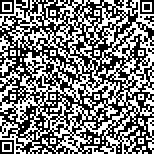王鲲鹏,袁逸杰,金英淑,等.改良手法复位配合功能训练治疗急性不可复性盘前移位的疗效分析[J].中华物理医学与康复杂志,2023,45(7):628-632
扫码阅读全文

|
| 改良手法复位配合功能训练治疗急性不可复性盘前移位的疗效分析 |
|
| |
| DOI:10.3760/cma.j.issn.0254-1424.2023.07.009 |
| 中文关键词: 手法复位 疼痛 不可复性盘前移位 |
| 英文关键词: Manipulative reduction Pain Disc displacement |
| 基金项目:天津市自然科学基金 (21JCYBJC00990) |
|
| 摘要点击次数: 4279 |
| 全文下载次数: 3974 |
| 中文摘要: |
| 目的 评价改良手法复位配合功能训练对急性不可复性盘前移位的疗效。 方法 按照纳入标准选取年龄19~55岁的急性不可复性盘前移位患者60例,随机分为试验组(采用改良手法复位)和对照组(采用传统手法复位),每组30例。2组手法复位后均配合3个月的功能训练。采用疼痛目测类比法(VAS)、最大主动开口度、下颌运动指数及MRI复查等指标评估2组患者治疗前、复位后即刻及3个月治疗结束后(治疗后)的疗效;通过口腔健康相关生活质量量表评估治疗前后的生活质量,并比较2组患者的复位成功率以及成功复位的操作次数。 结果 ①2组患者治疗后的VAS评分、最大主动开口度、下颌运动指数、口腔健康相关生活质量指数均较组内治疗前有明显改善(P<0.05)。②复位后即刻,试验组的最大主动开口度[(31.81±3.82)mm]和下颌运动指数[(6.89±1.51)分]显著优于对照组[(28.49±3.01)mm和(8.01±2.00)分],且组间差异有统计学意义(P<0.05);治疗结束后,试验组和对照组最大主动开口度[(40.31±3.91)mm、(41.05±3.22)mm]及下颌运动功能指数[(2.43±1.16)分、(2.87±1.24)分]均得到进一步改善,但治疗后的组间差异无统计学意义(P>0.05)。③治疗后,试验组的VAS评分[(0.31±0.24)分]及口腔健康相关生活质量指数评分[(16.31±4.55)分]均较对照组[(0.55±0.21)分、(18.98±5.12)分]改善明显(P<0.05)。④复位后即刻MRI复查显示,试验组的复位成功率(96.67%)显著高于对照组(80.00%),且组间差异有统计学意义(P<0.05);治疗结束后MRI复查显示,试验组的复位成功率(86.67%)亦高于对照组(73.33%),但组间差异无统计学意义(P>0.05)。2组成功复位的操作次数差异无统计学意义(P>0.05)。 结论 改良手法复位不仅成功率较高,还可即刻改善患者的最大主动开口度和下颌运动功能,配合功能训练更可有效减轻患者疼痛,提高生活质量。 |
| 英文摘要: |
| Objective To evaluate the efficacy of combining modified manipulative reduction with functional training for the treatment of acute anterior disc displacement without reduction. Methods Sixty anterior disc displacement patients aged from 19 to 55 years were randomly divided into an experimental group and a control group, each of 30. The experimental group was given modified manipulative reduction, while the control group was provided with traditional manipulative reduction. After the manipulative reduction, both groups received 3 months of functional training. Visual analog scale (VAS) ratings, maximum active mouth opening, a mandibular movement index and magnetic resonance imaging (MRI) were employed before and immediately after the reduction and after the functional training to evaluate their effectiveness. An oral health-related quality of life scale was also used. The number of attempts needed to achieve successful reduction and the overall success rate were compared between the two groups. Results There was significant improvement in the average VAS ratings, maximum active mouth opening, mandibular movement index and oral health-related life quality of both groups after the experiment. Immediately after reduction, the maximum active mouth opening and mandible movement in the experimental group were significantly higher than in the control group, on average. Further improvement was observed after the treatment such that there was no significant difference between the two groups. After the functional training, however, the experimental group′s average VAS and oral health-related life quality scores were significantly better than the control group′s averages. According to MRI right after reduction, the success rate of the experimental group (96.7%) was significantly better than among the control group (80%). After the functional training the corresponding values were 86.7% and 73.3%. That difference was no longer significant. There was also no significant difference in the number of attempts needed to achieve successful reduction. Conclusion The modified manipulative reduction not only has a higher success rate, but also can immediately improve mouth opening and mandible mobility. Combined with functional training, it can effectively reduce pain and improve life quality. |
|
查看全文
查看/发表评论 下载PDF阅读器 |
| 关闭 |
|
|
|